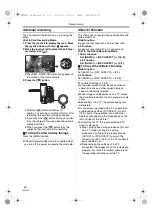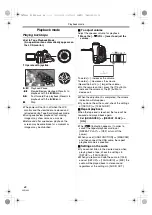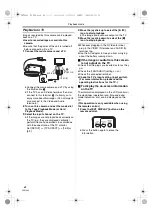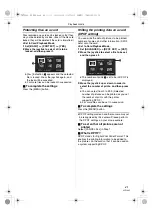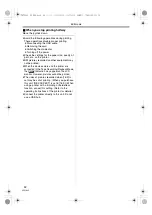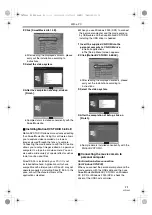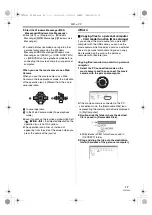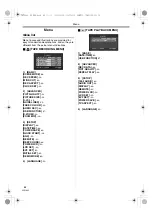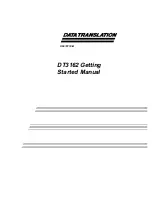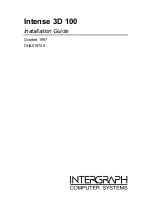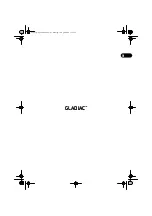
Edit mode
47
VQT1A45
vertically. In this case, refer to the operating
instructions for the device that you are recording
(dubbing) to or read the operating instructions
for the TV and set to 16:9 (full).
≥
For more information, refer to the operating
instructions for your TV set and recorder.
≥
When you do not need functional indications or
date and time indication, respectively set
[SETUP] >> [DISPLAY] >> [OFF] or set [BASIC]
>> [DATE/TIME] >> [OFF] in the Tape Playback
Mode.
(When you connect the movie camera and a
recorder with the DV cable, these indications
may not appear.)
ª
When neither image nor sound from
the movie camera is output to the TV
set
≥
Check that the plugs are inserted as far as they
go.
≥
Check the [12bit AUDIO] settings. (
-48-
)
≥
Check the connected terminal.
Using the DV Cable for Recording
(Digital Dubbing)
By connecting other digital video equipment with
DV terminal and the movie camera by using the
DV cable VW-CD1E (optional)
1
, high-image-
quality dubbing can be done in digital format.
This model cannot be used as a Recorder.
≥
Set to Tape Playback Mode.
(Player/recorder)
1
Connect the movie camera and digital video
equipment with the DV cable.
2
Start playback. (Player)
3
Start recording. (Recorder)
4
Stop playback. (Player)
≥
Do not plug or unplug the DV cable during
dubbing, or the dubbing may not be completed
properly.
≥
Even if you use a device equipped with DV
terminals such as IEEE1394, you may not be
able to perform digital dubbing in some cases.
For more information, see the instructions for
equipment connected.
≥
Regardless of the menu settings on the
recorder, digital dubbing is carried out in the
same mode as the [AUDIO REC] mode of the
playback tape.
≥
The images on the recorder monitor may be
disturbed, but it does not affect the recorded
images.
1
VQT1A45_EP_ENG.book 47 ページ 2006年12月6日 水曜日 午前9時10分


